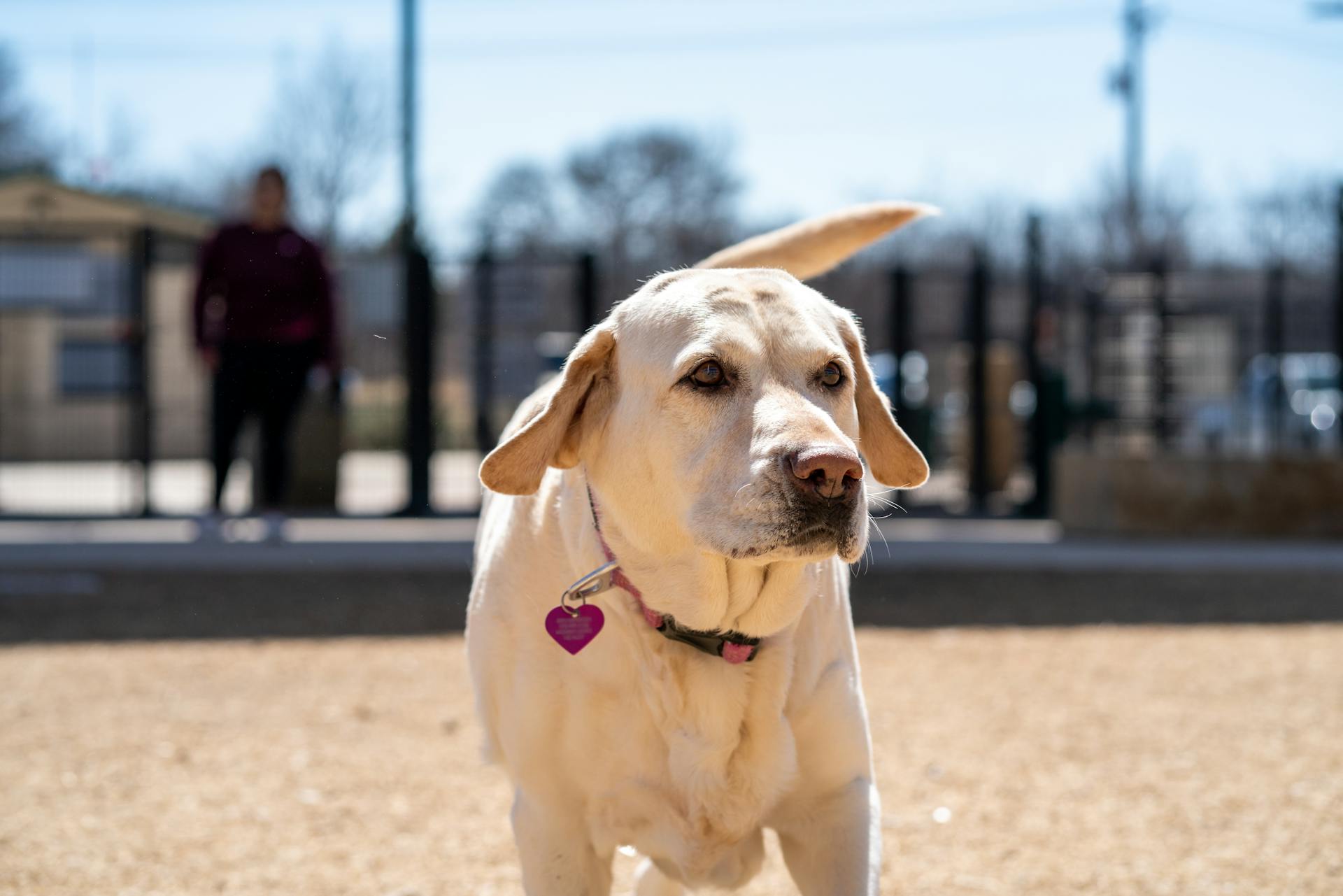
Assistance animals play a vital role in helping individuals with disabilities navigate their daily lives.
To qualify as an assistance animal, the animal must be individually trained to perform specific tasks or do work for a person with a disability.
The law requires that assistance animals be allowed in all public spaces, including housing, transportation, and restaurants.
Accommodations and Laws
Title III of the ADA requires places of public accommodation to permit service animals to accompany individuals with disabilities in all areas where the public is allowed to go.
Service animals are narrowly defined as either a dog or miniature horse (when reasonable) that has been individually trained to do work or perform tasks for the benefit of an individual with a disability. This includes tasks like guiding people who are blind or alerting people who are deaf.
Under Title III of the ADA, business owners can only ask individuals with disabilities who are accompanied by a service dog or miniature horse if the dog or miniature horse is a service animal required because of a disability, and what work or task the animal has been trained to perform.
In some states, like California, disability discrimination laws allow for emotional support animals as a reasonable accommodation in certain circumstances. However, the ADA does not obligate businesses to accommodate emotional support animals.
Federal vs. State Disability Laws
Federal ADA law and the PHRA Fair Housing Act both prohibit housing providers from discriminating against people who need service animals. This means landlords must allow service animals, even if their policies normally don't permit pets.
Requirements
To be eligible for a service dog, you must have a physical, emotional, or mental health disability.
The dog must be trained to take a specific action when needed to assist the person with a disability.
A service dog must be under its handler's control at all times.
If it's not obvious what service the dog provides, the handler must be willing to answer two questions about their service dog: is the dog a service animal required because of a disability, and what work or task has the dog been trained to perform?
For another approach, see: Social Security Disability Service Animal Assistance Programs
Certification and Registration
You don't need a certification or registration to have a service animal, but it can be helpful to have documents and accessories that signal your dog is trained and at work.
Service animal certification or registration documents sold online do not convey any rights under the ADA.
Service animals are subject to local dog licensing and registration requirements, just like any other dog.
Mandatory registration of service animals is not permissible under the ADA.
Colleges and other entities may offer voluntary registries, which are permitted under the ADA, to help emergency staff identify service animals during an evacuation process.
Here are some things to keep in mind:
Employment and Workplace
Employers should work with employees to find a solution when a coworker has an allergy or phobia related to a service or emotional support animal. This might involve providing private workspaces or allowing telecommuting.
The ADA requires employers to accommodate both employees, without prioritizing one over the other. Employers should not disclose specific information about an employee's disability and accommodations to their coworkers, but can work with the disabled employee to educate and inform others about the animal's role and restrictions.
Employment Context
Employers should work with employees to find a solution that works for everyone when allowing service or emotional support animals in the workplace.
Some employees may be extremely afraid of or allergic to the animal, so employers should attempt to accommodate that employee.
Employers can separate and protect both employees by providing private workspaces, allowing telecommuting, restricting the animal from certain areas, or providing air cleaners to reduce animal dander.
Educating other employees about the dos and don’ts of interacting with service or emotional support animals is crucial to prevent workplace disruptions.
Employers must bear in mind that the ADA requires a certain level of confidentiality that limits an employer’s ability to disclose specific information to coworkers about another employee’s disability and accommodations.
Employers should work with the disabled employee to educate and inform other coworkers about the animal’s role and restrictions.
Control Required
A service animal must be under the control of its handler at all times. This is a crucial aspect of being a service animal, and it's essential to understand what this means in practice.
The ADA requires service animals to be harnessed, leashed, or tethered, unless the individual's disability prevents using these devices or they interfere with the service animal's safe, effective performance of tasks.
In some cases, a service animal may not be able to wear a harness or leash due to its disability. If this is the case, the individual must maintain control of the animal through voice, signal, or other effective controls.
Here are some key things to remember about control:
- No aggressive behavior towards people and other animals.
- Refrain from sniffing behaviors unless released to do so.
- No solicitations for food or affection while on duty.
- No over-excitement and hyperactivity in public.
- Able to tolerate novel sights and sounds in various public settings.
- No unruly behavior or excessive barking.
- No relieving themselves in public without being given a specific command.
Accommodations
Service animals are working animals, not pets, and can accompany individuals with disabilities in all areas where the public is allowed to go.
Under the ADA, business owners can ask individuals with disabilities if the dog or miniature horse is a service animal required because of a disability, and what work or task the animal has been trained to perform.
Emotional support animals are not considered service animals and do not qualify for accommodations in places of public accommodation under the ADA.
Some states, like California, have laws that allow for emotional support animals as a reasonable accommodation in certain circumstances.
Business owners have no obligation to accommodate emotional support animals under federal law, but may be required to do so under state law.
Landlords are required to accommodate emotional support animals under the Fair Housing Act, but only if the tenant provides documentation from a licensed healthcare professional.
In some cases, emotional support animals may be considered a reasonable accommodation, but only if the tenant has a disability and the animal is necessary to assist with that disability.
Assistance Animal Types and Rules
Service animals are trained to assist individuals with disabilities, and they're protected under the Americans with Disabilities Act (ADA). A service animal is defined as a dog that has been individually trained to do work or perform tasks for an individual with a disability.
Staff can only ask two questions about a service animal: if it's a service animal required because of a disability, and what work or task it has been trained to perform. They can't ask about the person's disability, require medical documentation, or ask the dog to demonstrate its ability.
Service animals can be taken into public areas, even if state or local health codes prohibit animals on the premises. However, if a business requires a deposit or fee to be paid by patrons with pets, they must waive the charge for service animals.
Here are some important rules to keep in mind:
- Only two questions can be asked about a service animal: if it's a service animal required because of a disability, and what work or task it has been trained to perform.
- Service animals must be trained to take a specific action when needed to assist the person with a disability.
- Staff cannot ask about the person's disability, require medical documentation, or ask the dog to demonstrate its ability.
- Service animals can be taken into public areas, even if state or local health codes prohibit animals on the premises.
Miniature horses are also protected under the ADA, and they must be individually trained to do work or perform tasks for people with disabilities.
General Rules
Service animals are working animals, not pets. They are defined as dogs that are individually trained to do work or perform tasks for people with disabilities.
To qualify as a service animal, the dog must be trained to take a specific action when needed to assist the person with a disability. For example, a person with diabetes may have a dog that is trained to alert him when his blood sugar reaches high or low levels.
Service animals are not the same as emotional support animals. If a dog's mere presence provides comfort, that would not be considered a service animal under the ADA.
People with disabilities have the right to train their own service animals, and are not required to use a professional service dog training program.
Staff are not allowed to ask about a person's disability, require medical documentation, or ask that the dog demonstrate its ability to perform the work or task. They can only ask two questions: (1) is the dog a service animal required because of a disability, and (2) what work or task has the dog been trained to perform.
Here are some key rules to keep in mind:
- Staff can only ask two questions about a service animal.
- Staff cannot ask about a person's disability or require medical documentation.
- Staff cannot require a special identification card or training documentation for the dog.
- Staff cannot ask that the dog demonstrate its ability to perform the work or task.
Allergies and fear of dogs are not valid reasons for denying access or refusing service to people using service animals. If a person with a disability cannot be accommodated due to allergies or fear of dogs, they should be assigned to a different location within the room or facility.
People with disabilities who use service animals cannot be isolated from other patrons, treated less favorably than other patrons, or charged fees that are not charged to other patrons without animals.
Miniature Horses
Miniature horses are an interesting case when it comes to assistance animals. They generally range in height from 24 inches to 34 inches measured to the shoulders and weigh between 70 and 100 pounds.
Entities covered by the ADA must modify their policies to permit miniature horses where reasonable. This includes considering whether the miniature horse is housebroken.
The facility must also assess whether the miniature horse is under the owner's control. This is one of the four assessment factors to determine if a miniature horse can be accommodated in the facility.
The other assessment factors include whether the facility can accommodate the miniature horse's type, size, and weight. This means considering the layout and design of the facility to ensure it can safely accommodate the miniature horse.
The facility must also determine whether the miniature horse's presence will not compromise legitimate safety requirements necessary for safe operation of the facility.
You might enjoy: Service Animal Miniature Horse
Becoming an Assistance Animal
To become an assistance animal, you'll need to determine if you have an eligible disability. This is the first step in the process of becoming a service dog handler.
There are four simple steps to help you understand how your dog can become a service dog: determine if you have an eligible disability, train your Service Dog, pass a Public Access Test, and consider Service Dog Certification and Registration.
If you're unable to train your dog as a service dog, you may want to consider an Emotional Support Animal (ESA) instead. ESAs do not require specific training and have access to no-pet apartments, and are exempt from breed or weight restrictions.
To qualify for an ESA, you must have a licensed mental health practitioner write a letter affirming that you have a qualifying condition that is helped by an emotional support animal.
How to Become a?
To become an Assistance Animal, you'll need to follow a few key steps. Determine if you have an eligible disability, as this is a requirement for Assistance Animal status.
Your disability will dictate the type of Assistance Animal you'll need, so it's essential to get this right. Consider what tasks or activities you struggle with on a daily basis.
Here are the four simple steps to help you understand how your dog can become a Service Dog:
- Determine if you have an eligible disability
- Train your Service Dog
- Pass a Public Access Test
- Consider Service Dog Certification and Registration
These steps are crucial for becoming a Service Dog, and they're outlined in the article.
Step 1: Determine Eligibility
To determine if you're eligible for an assistance animal, you must have a qualifying condition that substantially limits a major life activity. This could be a physical disability like visual impairment, limited mobility, or hearing loss.
Under the ADA, a qualifying condition can also be a mental or emotional disability, such as anxiety, depression, or PTSD. If you suspect you have a qualifying condition, it's essential to be evaluated by a Licensed Mental Healthcare Practitioner (LMHP) who can write a letter confirming your eligibility.
A typical letter from an LMHP will have the following traits: it's written on the practitioner's letterhead, dated and signed, and includes the practitioner's contact information, license number, license date, and state of licensure. The letter should also contain the practitioner's opinion on whether you have a mental or emotional disability that can qualify for a service dog or emotional support animal.
Here's a breakdown of what makes a mental or emotional disability eligible for an assistance animal:
Keep in mind that this list is not exhaustive, and other conditions may also qualify. It's essential to consult with a licensed mental healthcare professional to determine if you have a qualifying condition.
Training Your
Training Your Service Dog is a crucial step in becoming an assistance animal. You're not required to work with a trainer – the ADA allows you to train your dog on your own.
To be considered a Service Dog, a dog must be individually trained to perform a job or task relating to your disability. There's no official organization that sets training standards in the U.S., so you have the freedom to train your dog in a way that works best for you.
Intriguing read: Financial Assistance for Dog Training
Training your Service Dog can take time and effort, but it's worth it to have a loyal companion that can assist you in your daily life. Some private standards suggest approximately 120 hours over six months, but this is just a guideline.
The most important thing for you to teach your Service Dog is tasking or learning the specific skill they will be performing to help assist with your disability. This can include guiding the visually impaired, pulling a wheelchair, sensing a medical alert, tactile stimulation during a panic attack, reminding the handler to take their medication, scouting a room for someone with PTSD, or grounding/blocking in public areas.
Here are some examples of tasks your Service Dog can learn:
- Guiding the visually impaired
- Pulling a wheelchair
- Sensing a medical alert
- Tactile stimulation during a panic attack
- Reminding the handler to take their medication
- Scouting a room for someone with PTSD
- Grounding/blocking in public areas
Remember, the goal of training your Service Dog is to help you live independently and confidently. With patience, consistency, and positive reinforcement, your dog can become a valuable assistance animal.
Frequently Asked Questions
Can someone ask me for papers on my service dog?
No, you cannot ask for papers or proof of registration for my service dog. Service animals are protected under the law, and asking for documentation is not allowed
Sources
- https://natlawreview.com/article/spb-depth-service-animals-reasonable-workplace-disability-accommodations-us
- https://www.mbm-law.net/insights/what-landlords-need-to-know-about-ada-service-animals/
- https://www.ada.gov/resources/service-animals-2010-requirements/
- https://www.ada.gov/resources/service-animals-faqs/
- https://www.servicedogcertifications.org/service-dog-requirements/
Featured Images: pexels.com


